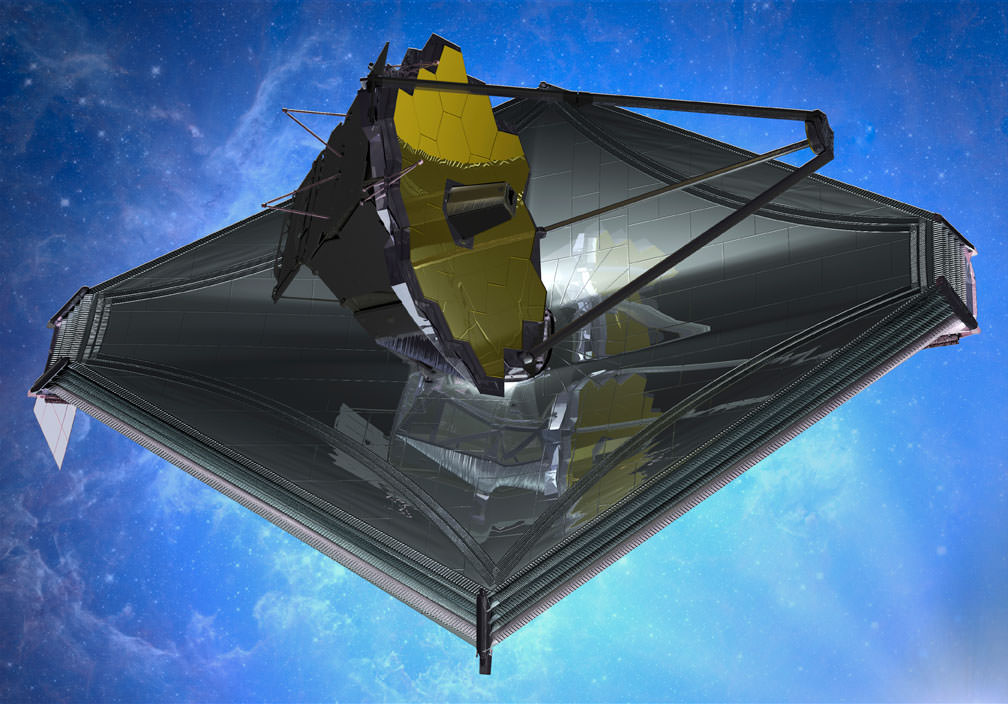You may have heard this one before, but encouraging news comes from NASA, ESA, and Arianespace today: they are now targeting December 18, 2021 as the new launch date for the oft-delayed James Webb Space Telescope (JWST).
The latest linchpin in getting JWST off the ground is that the Ariane 5 rocket appears to be ready and approved for launch. The usually reliable Ariane 5 experienced problems during previous launches but officials from Arianespace said the origin of the problem was found and corrective actions have been taken, leading to a successful launch on July 30 of this year, where an Ariane 5 sent two commercial satellites into orbit.
Additionally, major elements of the Ariane 5 rocket have reached Europe’s spaceport in Kourou, French Guiana. The rocket’s fairing, upper stage and core stage are now on site, but the telescope itself awaits transport from Northrop Grumman’s facilities in Redondo Beach, California.

NASA says teams are preparing for shipment operations, during which the observatory will undergo final closeout procedures and packing for its journey to the launch site. The scheduled shipment of Webb to French Guiana will be towards the end of September 2021.
First conceived of in 1989, the JWST project has endured numerous delays, problems, fixes, tests and re-tests — as well as many rescheduled tentative launch dates. The telescope also survived a threatened cancellation in 2011. Previous tentative launch dates have come and gone in (at least) 2007, 2011, 2013, 2014, 2018, and the latest previous date was October 31, 2021.
But now, the much anticipated, long awaited next generation telescope is as close as it’s ever been to getting off the ground. Touted as the successor to the Hubble Space Telescope, astronomers hope to use JWST to look back in time to when the universe was just 200 million years old, and see the first stars and galaxies. But they will also use Webb to examine virtually every phase of our cosmic history, from the formation of the first stars and galaxies, to studying our own solar system, as well as examining the atmospheres of distant exoplanets to determine if these worlds could support life.

The issues with the Ariane 5 occurred on two launches in 2020 where unexpected vehicle accelerations occurred when the fairing separated from the rocket. The fairing is the nose cone used to protect a spacecraft payload during launch and acceleration through Earth’s atmosphere.
However, an Ariane 5 successfully launched two commercial communications satellites on July 30, 2021. But a second “however”: one additional launch of an Ariane 5 is scheduled from the Kourou spaceport before Webb can blast off (now firm date ATM, but tentatively in September). And in the meantime, JWST has to make the arduous journey to South America, arrive safely and pass all the pre-launch tests.
So take our advice and just pencil this latest launch date in very lightly, and don’t get your hopes up too high.
Further reading:

